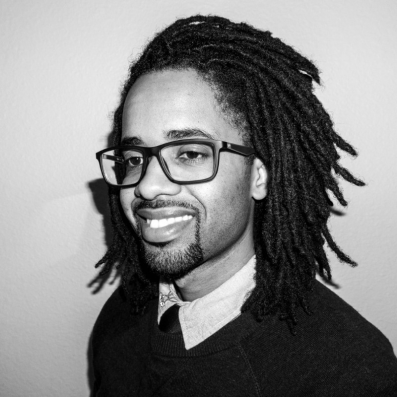Climbing Out of a Career Slump


Morgan R. Nimmons started the UX Design Course in October and by the new year had scored a full-time job as a UX designer.
How’d she do it? With a little help from a friend.
Morgan was a web developer at a private university and freelanced as a graphic designer on the side. What she envisioned as front-end development job with the potential to combine her design background with tech became a back-end development role.
She mentioned her “career slump” to a friend, who then described her work as a UX/UI designer. Something clicked for Morgan.
“She told me all about her job and I started to do my own research and realized that UX/UI design was exactly what I was looking for,” Morgan said. “It combined my research/communication background from college as well as my design skills. Additionally, my tech background would allow me to bridge that communication gap between developers and designers.”
Morgan began searching for a way to upskill. She knew she wanted to stay in her full-time role, so she focused on online courses that offered flexibility.
Many of the programs she found “expected 20 hours a week or more in time commitment and they were six or more months long,” she said. “Plus, they were really expensive.”
Springboard was “more affordable, had an impressive curriculum, provided students with a mentor,” and the time commitment “was doable for my schedule,” Morgan said.
That friend who helped Morgan realize UX design was the right pivot weighed in on Springboard’s curriculum. “I shared it with my friend… and she said the course looks legit, you should try it,” Morgan said.
That curriculum taught Morgan a lot. “In graphic design, you’re basically designing for the client or stakeholders and you don’t get a chance to talk or learn from the actual audiences that will be interacting with your designs,” she said. “Springboard taught me how important it is to be a more empathetic designer and to always create products with users in mind. Yes, the stakeholders have to like what we UX designers create, but if the users have trouble understanding the product, they’re not going to use it.”
Get To Know Other Design Students
Valena Del Valle
Junior Product Designer at The Hartford
Kashif Ross
UX Analyst at Circulo
Volkan Kantar
UX Designer at Microsoft
Mentorship was important. Morgan’s relationship with her mentor “was a wonderful experience,” she said. “She would really take the time to review my assignments and provide me with helpful feedback. She gave me plenty of insight into how the UX design field is and because she has 10+ years of experience, she had plenty of examples and stories to tell.”
Of course, Morgan had another UX mentor of sorts supporting her: her friend. In addition to giving Springboard a thumbs up, she helped Morgan find her current job.
“She told me that there was a job opening at her company,” Morgan said, “but I was weary about it because she said it was more mid-level. But she said, ‘Give it a try anyway.’”
Although she had not completed the Springboard course, Morgan had worked on a capstone project (a travel safety app for women) and picked up myriad learnings that were highly relevant to what the company was looking for. “I was able to really in detail explain my process,” she said.
After interviewing with a recruiter, a senior-level UX designer, and a business analyst, Morgan was given a design challenge. Again, her Springboard experience paid off.
“It was basically going through the whole process of what I learned at Springboard,” she said. “They really liked the project.”
After a final interview with the entire team, Morgan got an offer just before Christmas and started her new job as a UX designer at Dycom Industries in mid-January.
“I absolutely love what I do,” she said. “I’ve even introduced some of the strategies that I learned from Springboard, such as card sorting and surveys, which was never used at my job before. I feel like I fit right in with my team because of the experience I gained from Springboard.”
Morgan’s advice for Springboard students:
- Learn as much as you can from your mentor. “They can provide great advice and help you prepare for your transition into the field of UX.”
- Focus on your portfolio. “If you don’t have a lot of projects in your portfolio, use the mini-projects as a way to build your portfolio, the gift-giving project in particular… Do side projects as well.”
- Get involved with the UX/UI design community. “Networking is crucial when it comes to finding a job, but it’s also beneficial to learn from other designers.”
For further reading, check out UI vs. UX: A Culinary Comparison
Since you’re here…
Interested in a career in UX design? Rise to the top of the CV pile when you enroll in our UX Bootcamp—you’ll get a UX job or your tuition money back. Take a look at our student reviews and test out our free UX curriculum to get a feel for our style and results. TL;DR: average starting salaries for our students = $85,440. Let’s do this.





